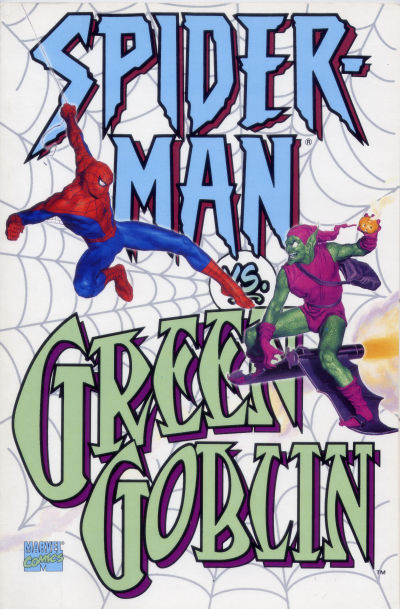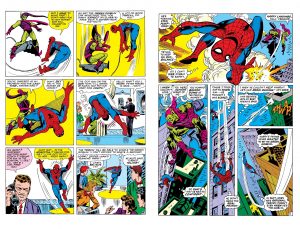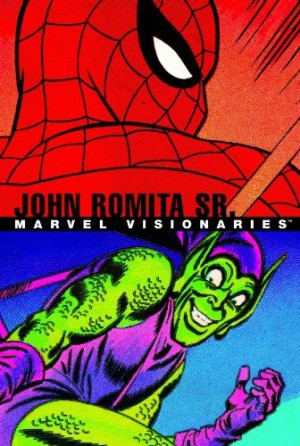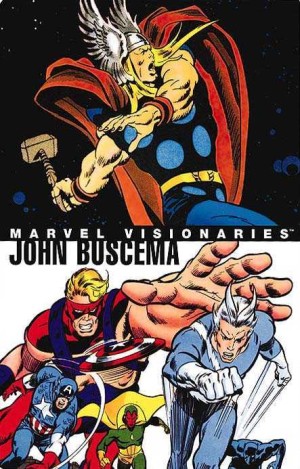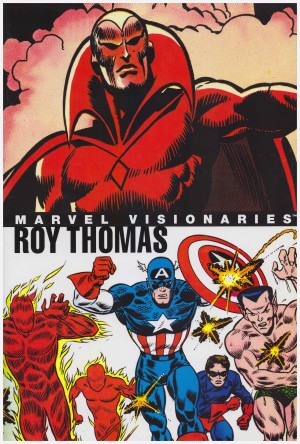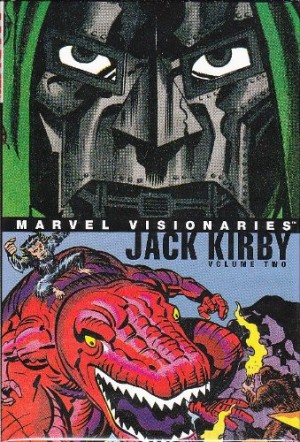Review by Frank Plowright
Of all the Spider-Man vs collections this is almost the most satisfying, surprisingly losing out to the more recent Vulture anthology. It’s a simple formula of Spider-Man facing his greatest enemy in a selection of still very good stories, and most of the creators you’d want to see from the 1960s and 1970s.
We start in the early 1960s in the days when Spider-Man was unaware the Green Goblin was industrialist Norman Osborn, father of his school friend. So were Stan Lee and Steve Ditko (sample art left), who deliberately obscure his face whenever he’s without his mask. While perfectly acceptable, the story is a strange selection in preference to the Goblin’s first appearance, which is better. There is more evidence of Ditko’s dense plotting, and the strong design of the pages is something many current artists could learn from.
By today’s standards there’s a lack of subtlety about the drug references in the next three part story, however well meaning, but Gil Kane’s moved Spider-Man and friends into the early 1970s, with some now amusing period clothes. Lee’s plot concerns the prevalence of drugs, how it isn’t just a ghetto problem, and he also highlights student protests while having Norman Osborn recall his other identity. Overwrought in places, the story is elevated by Spider-Man’s novel method of solving his problem and some great art by Kane (sample, right).
The 1974 material is still the most famous encounter between Spider-Man and the Green Goblin, with Gerry Conway writing more convincing dialogue for Peter Parker and his supporting cast and Gil Kane drawing the hell out of a tragic story. Conway makes good use of the Goblin knowing Spider-Man’s true identity and ends up with an enraged and distraught Spider-Man superbly conveyed. Anyone coming to this story cold with no idea of how it plays out should still be caught up in the drama.
It’s a leap of over twenty years to the final contribution from 1995, and that’s also excellent. Sal Buscema drew Spider-Man for years, always solid, rarely spectacular, but never failing to tell the story well and give the cast the correct emotional impact. J. M. DeMatteis sustains a tension by setting a psychological drama around four characters, three of whom know a secret the fourth is unaware of. There’s a great opening with Mary Jane Watson echoing the previous story, and because insanity is at the heart of matters there’s no clue as to how things are going to play out, with DeMatteis pushing all the right buttons. He’s written far more highly acclaimed stories both with Spider-Man and without, but this deserves some consideration as ranking among his best in a long and respected career.
Most other Spider-Man vs collections lack the breadth and coherence of this selection. It’s a shame there was no room for John Romita’s Spider-Man début in which the Green Goblin’s identity was finally revealed, but this is otherwise a very good selection that still reads well.
